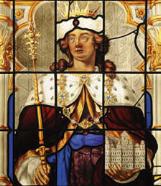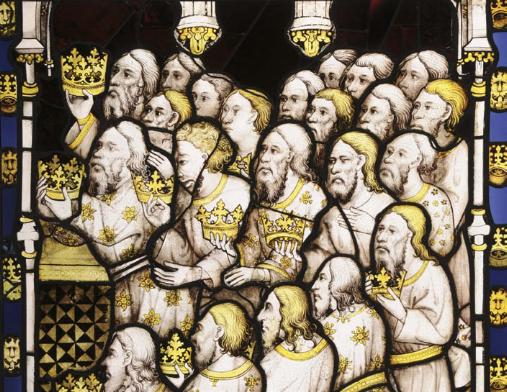

BCD Special Report on
Historic Churches
17th annual edition
5
post-Reformation history of this medieval
masterpiece will become much clearer thanks
to the conservation programme currently
under way, thanks to the support of the
Heritage Lottery Fund. By the time James
Torre described the window in the 1690s at
least four panels were in the wrong position,
suggesting that some repairs necessitating
the removal of panels had already been
undertaken. Te number of misplaced panels
had risen to 17 by the time Tomas Gent
published his guidebook to the window in
1762. Te name of 14-year-old plumber-glazier
Tomas Clarke and the date 1794 and 1795
is scratched on the window, evidence of the
continual trickle of small scale repairs.
Between 1825 and 1827 the frm of Tomas
Noton and Son was entrusted with the complete
re-leading of the Great East Window (above).
Te names of the glaziers employed by Noton
– H Bewlay, J Jackson and R Snowdon – are
scratched on panes in the tracery of the window.
Te re-glazing was not achieved without
cost: the original coloured edges of all the
tracery panels were lost at this time, probably
as a consequence of the careless removal of
the glass from the tracery. Tis intervention
probably saved the window from disaster,
however, for in 1829 the choir was engulfed
in fre, set by the mentally unstable arsonist
Te Great East Window of York Minster (1405–8), with a large medieval head (middle row, second from left) used as a stop gap, perhaps during the restoration of 1825–7
(Photo: Te York Glaziers Trust), and (below) Solomon by William Peckitt, 1780, in the south transept of York Minster (Photo: Te York Glaziers Trust)
Jonathan Martin. Te newly re-glazed window
survived the worst of the fames and this
near-miraculous survival no doubt fuelled the
interest in stained glass that was to culminate in
its triumphant revival in the course of the 19th
century, resulting in a resurgence of production
unprecedented since the Middle Ages.
Recommended Reading
Sarah Brown, Stained Glass at York Minster,
Scala in association with the Dean and
Chapter of York, London, 1999
Sarah Brown, ‘Te Survival, Preservation
and Reinterpretation of the Medieval
Stained Glass of St Mary’s, Fairford,
Gloucestershire’ in Virginia Raguin (ed),
Art, Piety and Destruction in the Christian
West 1500-1700, Ashgate, Farnham, 2010
Eamon Dufy, Te Stripping of the Altars:
Traditional Religion in England 1400-1580,
Yale University Press, New Haven and
London, 1992
Tomas French, York Minster: Te Great East
Window, Corpus Vitrearum Summary
Catalogue 2, Published for the British
Academy by Oxford University Press,
Oxford, 1995
Richard Marks, Stained Glass in England
during the Middle Ages, Routledge,
London, 1993
Julie Spraggon, Puritan Iconoclasm during
the English Civil War, Boydell Press,
Woodbridge, 2003
Sarah Brown
has published widely on
stained glass of all periods. She is currently the
director of the York Glaziers Trust and lecturer
in History of Art at the University of York where
she is course director of the MA in Stained Glass
Conservation and Heritage Management.